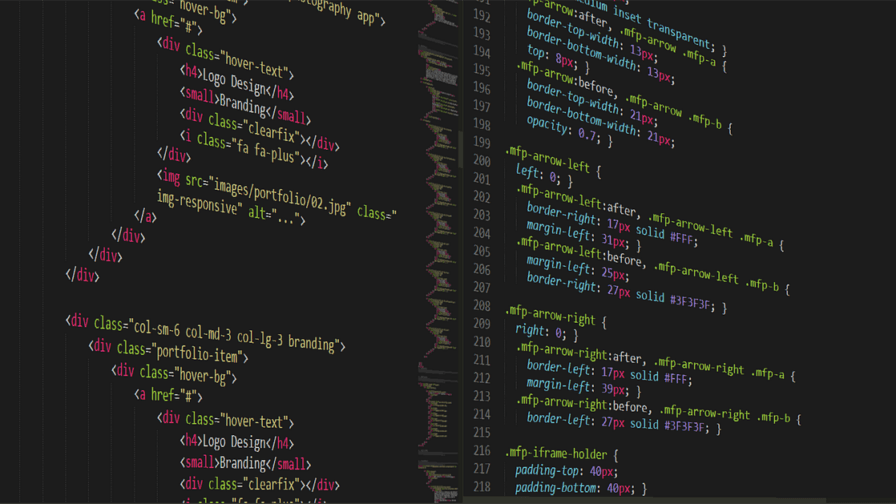
This is a comprehensive guide for developers and those who want to learn about JS. It covers the basics of the language, syntax, and how it relates to other languages like Java or C++. It also includes useful information on code formatting, debugging tools, web frameworks, testing frameworks, and much more.
Here, you can also find relevant insights for your career as a JavaScript Developer, like the top related job positions and the average salaries in Europe.
What is JavaScript?
Let’s start from scratch. JavaScript is a prototype-based, multi-paradigm, single-threaded, dynamic language, which supports object-oriented imperative and declarative styles (like functional programming).
If you’ve landed here, by now you should have realized that you need JavaScript to get far in tech.
As a junior web developer, for instance, you have most likely started from HTML and CSS, which is good. But web development comprises three elements:
- HTML allows you to determine a webpage’s structure and the headers, the body text, and images
- CSS, instead, gives you control over how the page looks by allowing you to customize fonts, background colors, and more
- Javascript, finally, is what makes your website dynamic
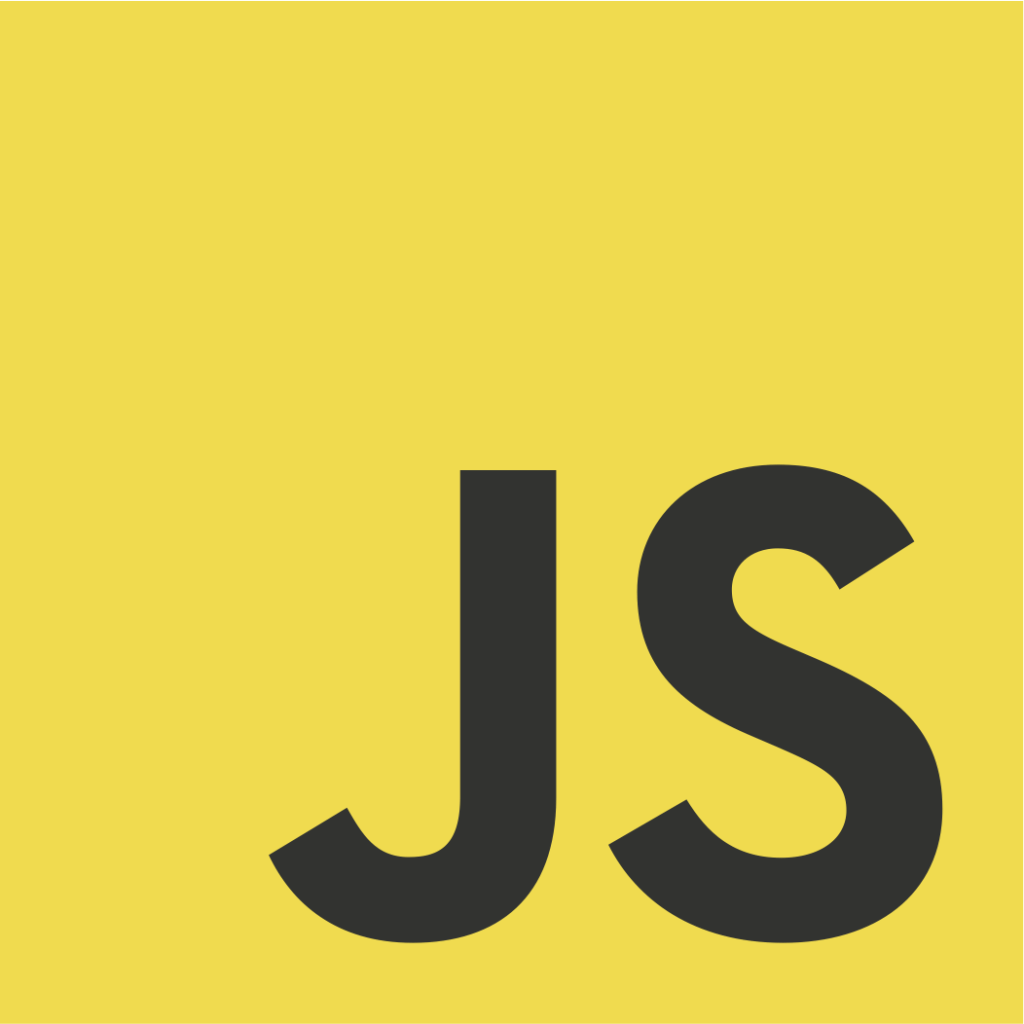
What does JavaScript do?
Although JavaScript is most known as the scripting language for websites, developers can use it in many non-browser environments, such as Node.js, Apache CouchDB and Adobe Acrobat.
The good news is that JavaScript isn’t as scary as you might think. Actually, it is a fun and flexible programming language that you can use on both the front-end and the back-end.
And not only that. JS is also quite useful to enable Web applications, Mobile apps and Game Development. It is used on web servers, Raspberry Pis, robots and running machine learning algorithms. Ultimaltely, it can be founf in Blockchain projects too, like an Ethereum Blockchain JavaScript API.
Just to let you understand, JS is used to create those apps you have on your phone and tablet, or the web browser based game you spend your night at.
So, if you think JavaScript is becoming obsolete you are quite far from the truth. Not to mention one simple fact: after a quarter of a century, JavaScript remains the only language that runs in a web browser
Why is JavaScript so hated?
The software environment is competitive and full of people with their own opinions about the best technology and practices. So, no matter which language we’re talking about, you’ll always encounter someone who hates it.
The more a coding language is popular, the more likely it is to be criticized. Still, JavaScript gets an incredible amount of hate in the software community.
One reason for that is that JS is quite simple to pick up and get going and can be used for both front-end and backend web development. This is why newbie developers who learn JS rarely invest in other languages, ending up using JavaScript for everything.
That’s how one of the major strengths of JS also has become its major weakness.
Still, there are quite a few recurring elements of complaint among developers that you should be aware of:
- Browser Dependency: because many functions and properties are executed differently across browsers, the result may look different on Chrome and Safari
- Weak-Typing and Aggressive Coercion: it’s a typing language that tries to convert different types to one another, resulting in some odd effects; e.g. the ‘+’ sign could mean adding numbers together or adding a number onto a text, or text onto a number
- Excessive Boiler-Plate Code: it is verbose and time-consuming programming language which requires developers to put repetitive codes in several places in order to avoid any error
- Annoying Global Variables: JavaScript provides support for global variables, but it does it oddly because the global variables have scope or accessibility in the whole program, meaning that you may encounter unexpected changes in your program generated by third-party libraries using the same variable name as the global variable you have declared before
- Implied Globals: if you misspell a variable, JavaScript does not show an error but declares your typo as a new global variable
- A lot of confusion: there are way too many JS frameworks out there, and way too many versions of AngularJS, React, Ember, Polymer, etc. which can lead JS developers to some initial confusion
Why is JavaScript popular?
When it was invented, over 25 years ago, JavaScript was never meant to become the cornerstone of modern web development. In fact, the language was created in less than two weeks by Brendan Eich at Netscape headquarters.
Today, we are depending on the interactivity that JavaScript provides. Parts of your favorite web pages won’t just work, including Netflix, YouTube, Google Docs, Google Maps, and many more. Not to mention smartphones, operating systems for computers and smart TVs; they all have JavaScript interpreters installed.
95% of all websites in the world—almost 2 Billions—use JavaScript. As a result, it’s by far the most used language in the world.

The simple fact that it is also used for other than just web development is evidence of its undoubtful advantages:
- Easy starter: JavaScript is relatively easy to pick up and, because of its flexibility, it is best suited for intermediate developers, who can use plugins and their own code snippets to get an application working.
- Easy setup: no need for you to download the JS in your machine in order to access all of its features and create a development environment; you just need your browser
- IDE: JS uses integrated development environments (IDE), or code editor, where you can create your code in a file with the .js extension
- Event-based programming for dynamic content: it has built-in events like ‘onClick’ and ‘onHover’ that act upon user interaction on a website to execute a specific segment of code
- End-to-end programming: runtime environment Node.JS runs JavaScript code outside a web browser giving developers the freedom to use JavaScript for server-side scripting in order to talk to databases, make HTTP requests, generate dynamic content, and create interactive user experiences/interfaces
- Active Community: JavaScript has many large communities around the world and is one of the largest on Stackoverflow; Node.JS has been downloaded over a billion times
How does JavaScript work?
We mentioned above that JavaScript is a scripting language. This means it is used to automate processes that users would otherwise need to execute on their own, and step-by-step.
Also, without JS, any changes on web pages you visit would require either manually reloading the page, or navigating a series of static menus to get to the content you’re after
JavaScript does the heavy lifting by telling computer programs like web browsers or web applications to do something specific. This is where dynamic features come in, for instance, to “tell” an image to animate itself, a photo to move through a slideshow, etc.
As JavaScript is such an integral part of web functionality, all web browsers come with built-in engines that can render JS meaning that you can type JS commands directly into an HTML document and the web browser will understand them.
JavaScript is typically embedded into a web page or included in a .JS file. Being a client-side language, the web browser downloads it on your computers for processing; no need for any additional programs or compilers.
JavaScript frameworks
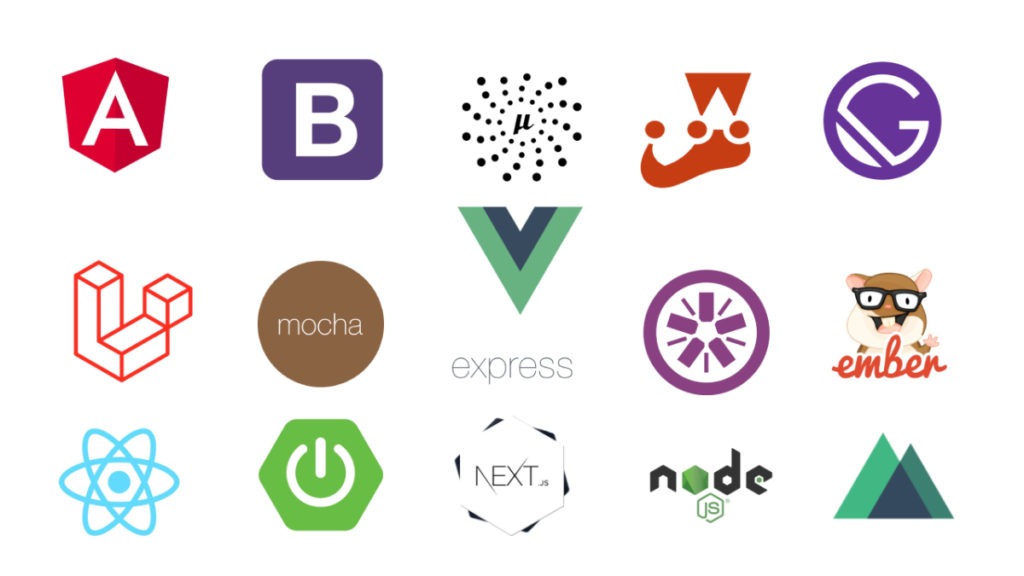
Now, if you are wondering what software can be used for JavaScript programming, frameworks are the backbone of any modern website, as they enable front-end developers to build interactive user interfaces easily.
To help you, we have crafted a comprehensive guide to the best JavaScript frameworks that you should know. But before going so much into details, you need to understand which JavaScript framework is best for you.
To do this, it’s important to first consider your needs and goals. There are three main types of JS frameworks: open source, commercial and lightweight (and these can be further broken down into more specific categories).
The 3 types of JS frameworks
- Open-source: with open-source front-end frameworks, all contributions are welcome. For example, the popular open-source React is a great example of this. According to Google, the baseline level of skill in JS frameworks is minimal, so it makes sense to start with the open-source frameworks first. They’re very easy to learn and understand, but the learning curve is steep. If you’re more of a visual learner, the commercial frameworks such as Angular and React are best for you. We have prepared a simple guide to help you choose the right React JS framework for your web-based project: CRA vs Gatsby vs Next.js
- Commercial: the most common JavaScript frameworks for modern websites, like Bootstrap and Foundation, are commercially developed. The key advantage to commercial frameworks is that they provide a wide range of features and are constantly being updated.
- Lightweight: in this type of framework, you don’t need to learn an entire programming language to develop your projects. Sometimes referred to as “micro frameworks”, lightweight frameworks can be considered more complex and robust. While most of these focus on scalability, some of them also have faster rendering time. They also offer the ability to build cross-browser and cross-platform websites. jQuery and Vue are two popular choices.
What’s the difference between front-end and back-end JS frameworks?
JavaScript is an open standard, so there are plenty of JavaScript Frameworks. Some may be used for developing a website or for client-side applications, while others are used for integrating JavaScripts and web technologies into Web 0 technology.
Both kinds of frameworks have many of the same features that help developers create a user-friendly experience. However, a back-end developer needs more complex syntax, structure, and technical requirements, while a front-end developer will deal mostly with CSS, HTML, and JavaScript building blocks.
These frameworks can handle front-end and back-end to improve UX a lot no matter what kind of web application you are building.
React, Angular, Vue, and Ember are among the most popular JS frameworks. They each offer a different way to bridge between server-side and client-side processing and to express complex data-driven interfaces. A framework does not have to be mutually exclusive. In fact, if you’re building a new app, you might benefit from working on all four at once.
JavaScript IDE
IDE is short for Integrated Development Environment. This basically means that you get all the utilities that a software developer would need to create and develop software.
JavaScript IDE allow you to configure and run each function in the browser using a mouse or keyboard. An IDE allows you to program applications quickly because you don’t need to configure multiple utilities manually.
You won’t need to learn how to use separate tools. Most features of IDEs save time, like intelligent code completion and automated code generation, others help developers organize their workflow and solve problems, like bugs, in real-time.
Syntax highlighting is another common feature in most IDEs to distinguish grammar.
Experienced developers build their own IDE to get ultra-customization and control by integrating utilities with lightweight text editors.
JavaScript Libraries
Generally, JavaScript libraries are collections of pre-written code snippets that can be used and reused to perform common JavaScript functions.
Because certain patterns in the JS code were being used repeatedly to accomplish the same tasks, the JavaScript community developed libraries and frameworks.
Things like recurring animations, interactive forms are just a couple of examples of myriads of repetitive tasks that developers can now automate with a code snippet. Developers can now code faster and with fewer vulnerabilities because of errors.
Learn the basics
The following does not intend to be a comprehensive JS technical guide. Take it as a very basic introduction to JS syntax.
JavaScript syntax
- White space: Spaces and line breaks are irrelevant, but best practice dictates that you use a linter or a style tool (Prettier is one common option)
- Case sensitive: JavaScript is case sensitive. So, beware: if you name a variable or an identifier avoid getting confused
- Literals: it refers to a value that is written in the source code, i.e. a string, a number, a boolean and more advanced constructs
- Identifiers: this is a series of characters and digits you can use to identify a variable, a function, or an object. You can start it with a letter, an underscore, or the dollar sign (this is used to reference DOM elements)
- Comments: as in any programming language, comments in JS let you annotate the code and add information. You can use it on a single line using double backslash, or a multi-line comment, e.g. it starts with /* and ends with */. Everything after // and /* */ is not interpreted as code
Don’t confuse JavaScript language with API features. For instance, the common console.log() line that you can find in many code examples is not JavaScript. It’s rather part of the APIs in our browsers or the server, or by external ecosystems like React and Vue.

Familiarising with JavaScript terminology
The following JS terms represent just an indication. Any specific and detailed indication of their naturae and usage is not clarified herein.
JavaScript is an interpreted programming language that conforms to the ECMAScript specification. JavaScript is high-level, often just-in-time compiled, and multi-paradigm. It has curly-bracket syntax, dynamic typing, prototype-based object-orientation, and first-class functions.
- Semicolons – Let’s start with a controversial aspect. You should use semicolons to terminate every line of your JS programme, but JavaScript interpreters usually do it for you. Thus some developers use them, some others don’t
- Values – It indicates values such as hello and 5 where string and number are the types of these values. JS has several types with their unique characteristics. To have a reference for a value, you can then assign it to a variable
- Variables – A variable is a value you assign to an identifier. You can name a variable and then get quick access to any value you stored in it just by searching for the variable’s name. To use a variable, first you must declare it either with a const or a let, the difference being that the former cannot be reassigned a new value, while the latter can. To avoid bugs, experienced JS developers prefer to use const more than let – unless they know they’ll need to reassign a value to that variable. Another kind of variable is var, but it’s becoming less and less utilised
- Types – In JavaScript there are two main kinds of types: primitive types (numbers, strings, booleans, symbols) and object types (a string, a number, a boolean, null or undefined). Object types also have properties and methods. You can assign a value with some type to a variable and later reassign the variable to host a different value. Remember, JS Variables are untyped
- Expressions – It’s a single JS unit that the JavaScript engine can evaluate, and return a value. You can find very simple expressions, called primary expressions, less simple ones like arithmetic expressions, string expressions, logical expressions, and even more complex ones such as those involving objects, functions, and arrays
- Operators – With them, you can combine two simple expressions to form a more complex one. Operators are classified according to the operands they work with. Some work with 1 operand, most work with 2 operands, and just one operator works with 3 operands. Here’s a list of operators:
- Addition (+)
- Subtraction (-)
- Division (/)
- Remainder (%)
- Multiplication (*)
- Exponentiation (**)
- Comparison (true or false)
- Conditionals (if – else)
- Arrays – They are a collection of elements. Arrays are objects that can hold any value, even of different types, and are multi-dimensional (i.e. you can put an array into another array), which makes them ideal for creating a matrix
- Strings – They are a sequence of characters that can be enclosed in quotes or double quotes (literals). Two strings can be joined using the + operator. You can also define strings using template literals, defined inside backticks, to make multiline strings much simple and also provide an easy way to interpolate variables and expressions into strings
- Loops – They are one of JavaScript’s control structures. Loops can automate and repeat a block of code as many times you want. There are many ways to use loops, but the most common ones are:
- while loops
- for loops
- for..of loops
- Functions – A function is a self-contained block of code, and a core part of JavaScript. Functions can be defined inside other functions, but the nested function cannot be called from the outside of the enclosing function

- Arrow functions – Similar to Functions, they allow you to write functions with a shorter syntax. But these functions are anonymous so you must assign them to a variable. Like Functions, they can have default values for parameters, only return one value, and contain other arrow functions, or even regular functions. The big difference is when they are used as object methods
- Objects – An Object is any non-primitive value (a string, a number, a boolean, a symbol, null, or undefined). They are passed by reference. Arrays and functions are objects in practical terms. Objects have Properties, Methods, Classes and Inheritance
- Asynchronous Programming & Callbacks – JavaScript code is usually run synchronously. But if your program cannot wait for a line of code to execute before another one – as it commonly occurs when working with the file system, the network, events, or the DOM in the browser – then JavaScript uses callbacks. This function is executed asynchronously as it passes a function to another function call that is called when the function finishes processing
- Promises – Promises offer an alternative way to satisfy your asynchronous coding needs. Their primary intent is to avoid the so-called callback hell; if we need to use the result of a function in the rest of your code, all our code must be nested inside the callback. Multiply that by 2-3 callbacks and you end up messing up things
- Async and Await – An async function typically returns a promise as async functions are abstractions of promises. The async/await duo helps you to return a cleaner code as well as a simpler mindframe to work with asynchronous code.
- Variable scope – Scope is the set of variables that is only visible to a portion of your program. Scopes in JS are divided into global scope, block scope and function scope. A variable defined outside of a function – or block – has a global scope making it available in every part of your program
Vanilla JavaScript
Vanilla JavaScript is the JavaScript language “as is”. You can hear this name when JS programming is done without any tools to make the coding process easier. To give you an example, imagine you wanted users to receive a “thank you” message for an action they made on your website. You can code it directly into an HTML page!
Common – and uncommon – JavaScript use cases
This is a random list of some JS use cases we have delved into with our articles. It’s an ever-growing library, so we advise you to keep monitoring this content.
How to add JavaScript to a website
This operation is simple and you won’t find it odd if you are familiar with HTML and CSS. You can add JavaScript to a page’s code using Voila, or as a separate header file with the extension .js. Both ways, the web browser downloads and processes the script.
Reactive Forms in Angular
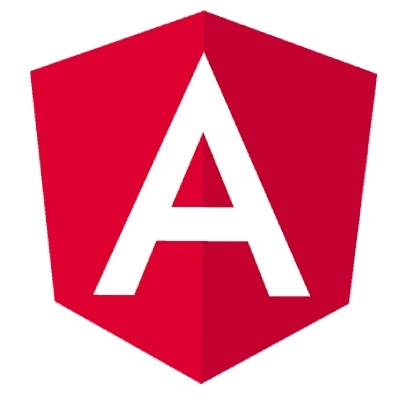
Italian Angular Community leader and Google Developer Expert Fabio Biondi introduces us to Angular Reactive Forms to address a very boring and repetitive task that every frontender wants to get done as quickly as possible.
No matter what kind of application you are writing, sooner or later you’ll need a form to collect data. Angular offers a solution not so many developers are aware of.
Getting started with WebAssembly and Rust
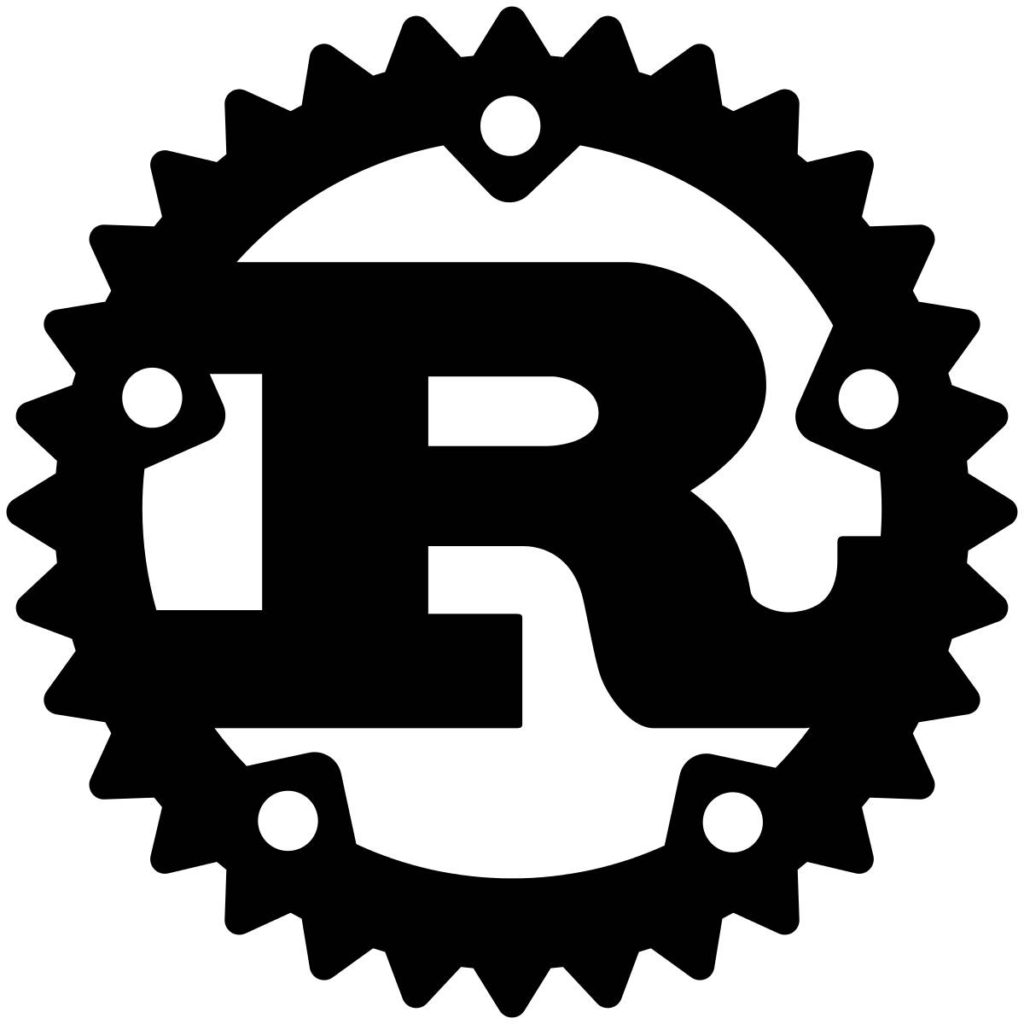
WebAssembly is a portable binary code format. It was designed by Mozilla to make JavaScript more efficient with heavy applications. Many believe it is a replacement for JavaScript, it’s not. It’s rather a companion tool that offers better performance.
Developers can code in C, C++, Go, and Rust (among others) and then compile their source into Wasm binaries to run them alongside JS in their applications.
In a dedicated article, you can learn to build your first Hello World project in WebAssembly using fast and memory-safe Rust.
JavaScript alternatives
Understandably, not all developers love JS and prefer to use other languages. Actually, there are many JavaScript alternatives, and that makes it quite difficult to choose.
Your choice ultimately should depend on your purpose. some alternatives that are more suitable for web applications while some others are better suited for mobile app development.
Whether it’s for a back-end project of for developing a front-end, you have an array of options such as Python, Ruby, Kotlin, PHP, TypeScript, CoffeeScript, Elm, ClojureScript or Dart.
To help you better understand all available options, you could find quite useful to read this guide on the best JavaScript alternatives.




